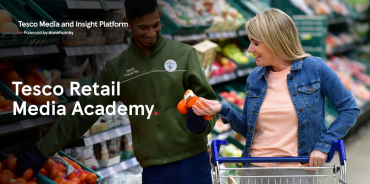Six ways in which New Zealand’s suppliers can strike the balance between pricing and promotion
Value. It’s a theme that’s absolutely critical in the retail environment—particularly today. But what does value actually mean? More importantly, what do shoppers think that value means?
In New Zealand, at least, we already know the answer to that question. Asked how they decide whether a retailer offers value for money, 89% said that they refer to the non-promo price or base price to decide if the retailer is offering good value. If a store offers good base prices on items like bread, vegies or expensive items like meat or nappies, say customers then that store also offers good value for money. What’s more, base pricing is seen to be a bigger indicator of value than anything else—own-brand products included.
Value perception isn’t just important for retailers, of course, it’s a fundamental consideration for suppliers when choosing their pricing strategy. When deciding which products to put in their baskets, for instance, around half of Kiwis (48%) simply opt for the lowest-priced one1.
While research shows that base pricing can be almost four times as important as promotions when customers are deciding where to shop2, the latter can still make a difference at a time when New Zealand’s shoppers already believe prices are higher than they are. The right promotion—delivered at the right time—can have a significant impact on a customer’s value perception as well.
The real question, then, isn’t necessarily as to whether we should only focus on base prices versus promotions; instead it’s identifying how suppliers can strike the right balance between base prices and promotions in order to deliver the right balance of value for New Zealanders.
Understanding the mechanics of price and promotions
One of the first things we need to acknowledge here is that shelf prices and promotions typically don’t have the same level of visibility to shoppers.
While suppliers might have detailed insight into their promotional plans across the next 12 months, for example, customers don’t. Because of that, it’s important for suppliers to ensure that their at-shelf pricing strategy is just as robust as the promotional equivalent: promotions might nudge shoppers towards an in-the-moment purchase, but it’s the at-shelf price that will have the greatest impact on value perception as a whole.
The other critical point to address is the fact that a balanced pricing and promotional strategy isn’t just about maximising sales. Research shows that value perception has a direct influence on loyalty and satisfaction alike. Customers who believe that a product delivers value are both more likely to rebuy it in the future, and to recommend it to others3. Getting this right has implications that go far beyond the immediate shopper response.
What exactly does "right" look like, though? One thing that’s critical for suppliers to do here is to take care of price conscious customers. In practice, that means two things: i) working with retailers to ensure that Key Value Items are priced competitively on an everyday basis, and ii) having enough flexibility within their pricing models that it remains possible to put some items on promotion (particularly in the more impulsive categories).
As well as that overarching strategy, there are six specific steps that suppliers can take in order to improve their overall price perception.
- Set a combined (and collaborative) price and promotion strategy with retailers
For pricing and promotional strategies to be truly effective, retailers and suppliers need to create them in partnership. That means working collaboratively from moment one—setting both the overarching strategy and the flow of communications to the shopper. Once a retailer has defined a topline strategy, Joint Business Planning (JBP) sessions should occur to gain input and alignment to drive coordinated actions. - Identify products most important to base price perception
On average, just 1-2% of products account for 25% of total sales. So, while a traditional grocer can’t price match every product against a discounter, it can compete on key items that customers are always looking for; bananas or potato chips say. Suppliers that operate in "evergreen" categories like this should work proactively with retailers to improve their price perception. - Understand how to treat products when on promotion
This is a competency that clearly requires data science. With adequate modeling capabilities, it’s possible to understand the depth and frequency at which a product should be promoted. What happens to demand when dropping a product from $5 to $4? What is the optimal promoted price? How often should this product be promoted? Knowing these answers is vital. The best and most effective promotions don’t just drive sales—they drive incremental growth for the category. - Layer in relevant personalised offers that provide value to customers
Even greater understanding of data science is needed here. With it, suppliers can work alongside retailers, to create individual workstreams with shoppers and optimise pricing around the moment of purchase. While broadly-targeted promotions can help to communicate above-the-line price perception, personalised offers have become increasingly important as a way to create value for your most important customers. - Make sure to communicate a consistent value statement across all channels
A clearly communicated value statement gives customers a better understanding of the value they’re getting when shopping your brand—regardless of whether they’re a brand new or decades-old loyal customer. On end displays, in the aisle, using the app, on the paper receipt, customers should have a clear understanding of the value they received. - Maintain a logical, easy-to-understand pricing structure
Customers tend to be acutely sensitive when it comes to pricing—even more so when something feels off. If a product’s pricing structure isn’t logical, they’ll be quick to let you know, particularly if it affects the products they care most about. Employing a range of pricing rules here can help: "Bigger Pack, Better Value", for instance, or "Good/Better/Best". To deliver the most impactful results, a rules-based pricing solution will be essential.
As customers struggle through difficult times, suppliers must leverage more than just promotions to grow loyalty and build trust. Base price is the most important lever to improving price perception—and with a unified price and promotion strategy connected to customer data science, suppliers can connect emotionally with their customers building long-term loyalty and driving strong, sustainable growth.
1 Health, sustainability, inspiration, and more: the new priorities shaping the future of New Zealand grocery - dunnhumby
2 New Zealand Price Perception Study 2021, dunnhumby
3 The Relationship Between Customer Satisfaction and Perceived Value on Customer Loyalty - Grzegorz Biesok and Jolanta Wyród-Wróbel, University of Bielsko-Biala
TOPICS
RELATED PRODUCTS
Boost value perception and execute promotions that drive results
Explore dunnhumby's Customer First platform for Price & PromotionsThe latest insights from our experts around the world
How to overcome assortment challenges? Lessons from history
Unlocking success: why agency planning teams should get Tesco retail media certified
Smart Retail: AI cheat sheet for retail execs




